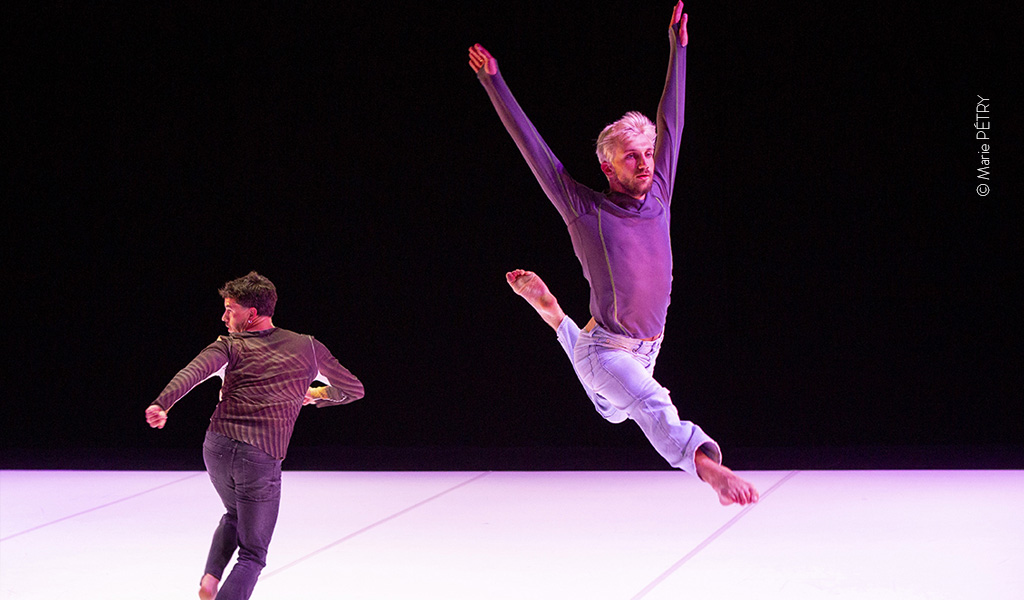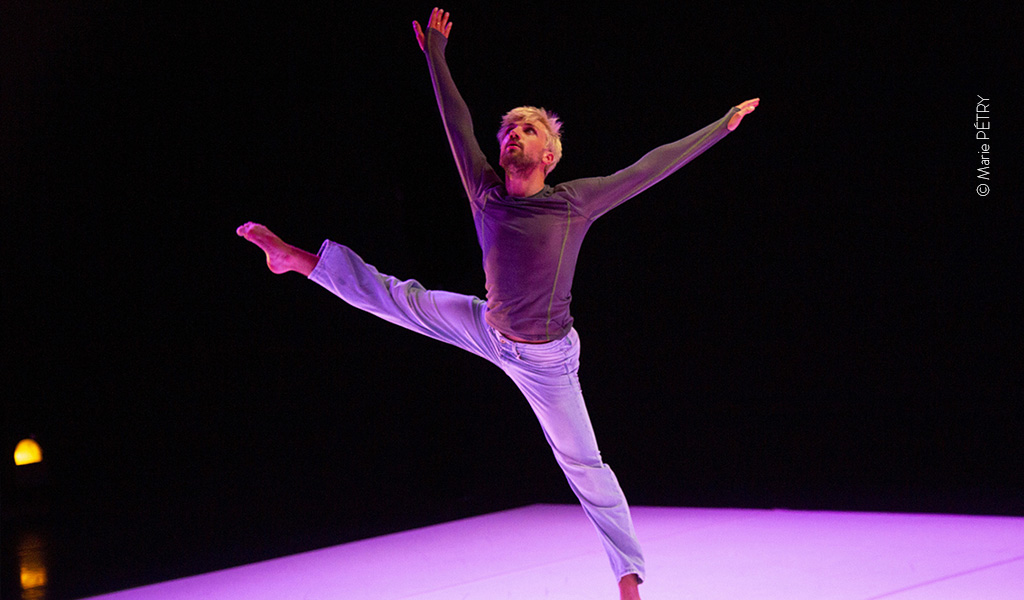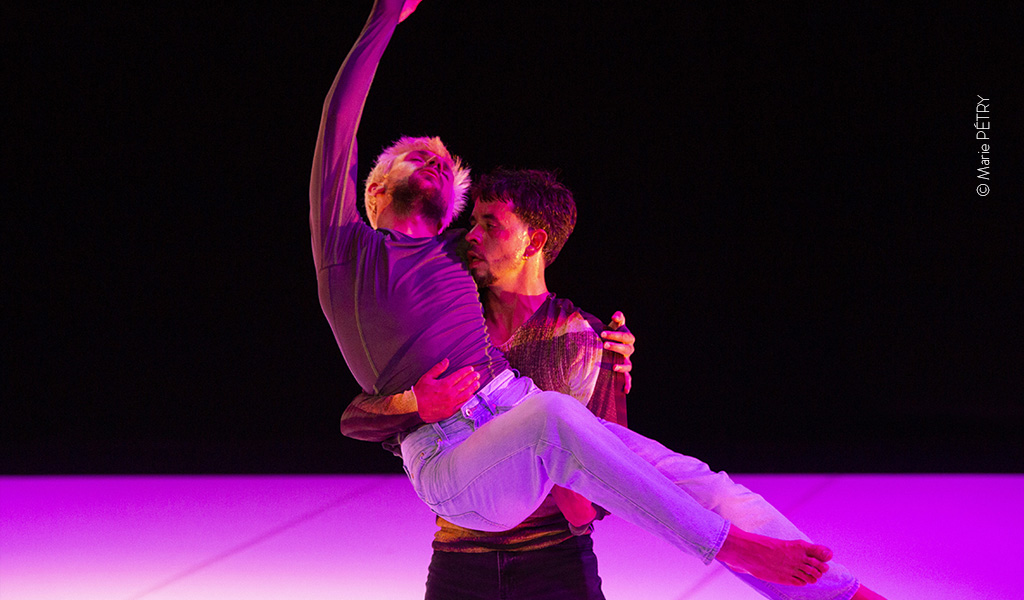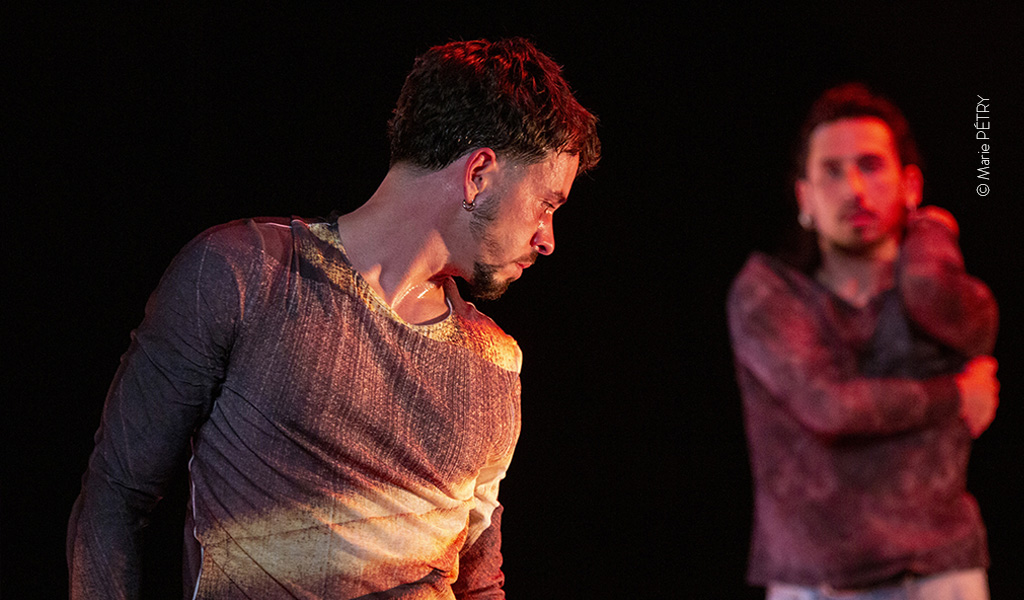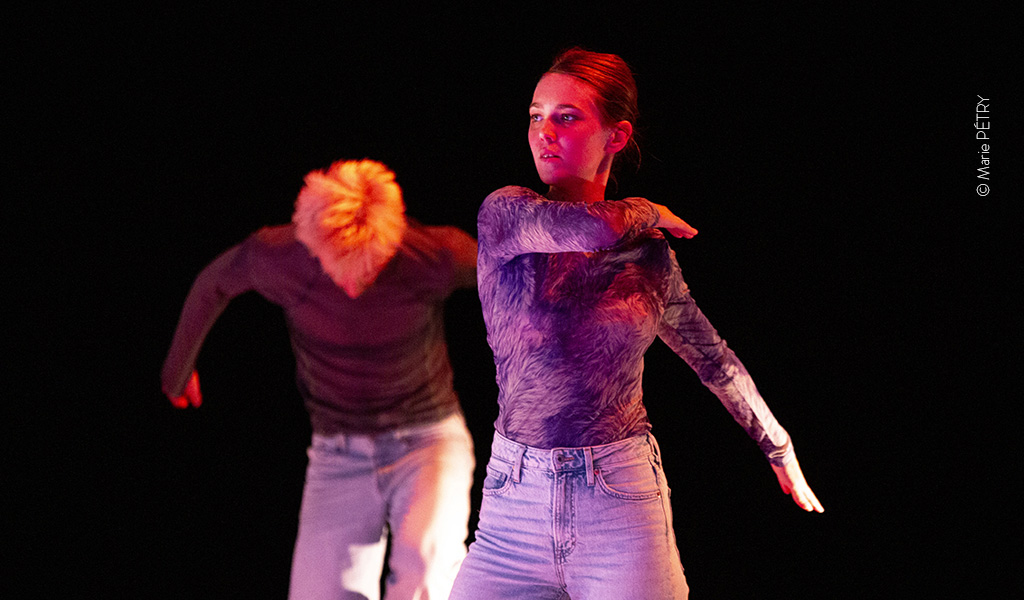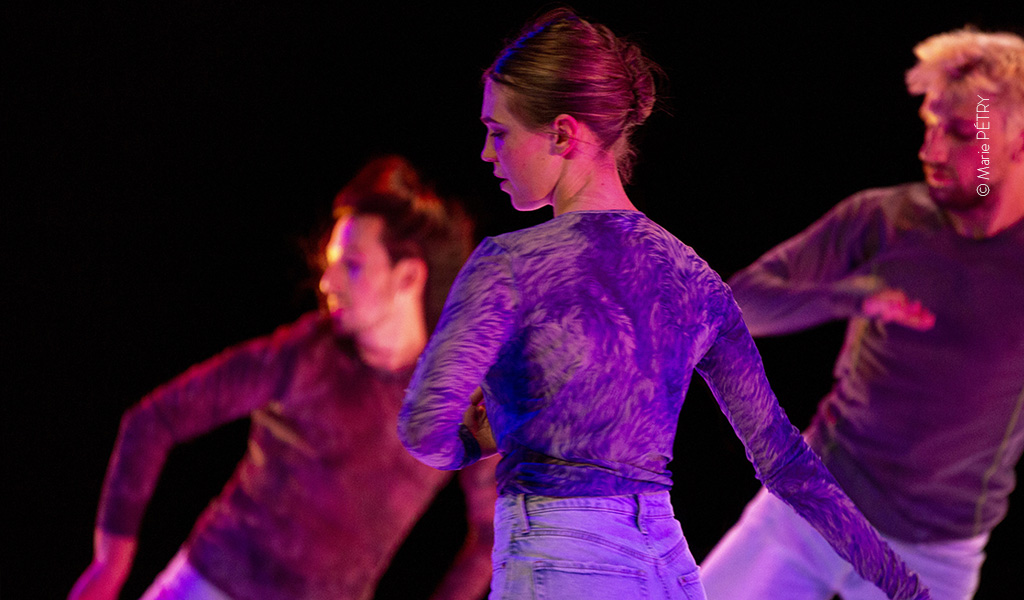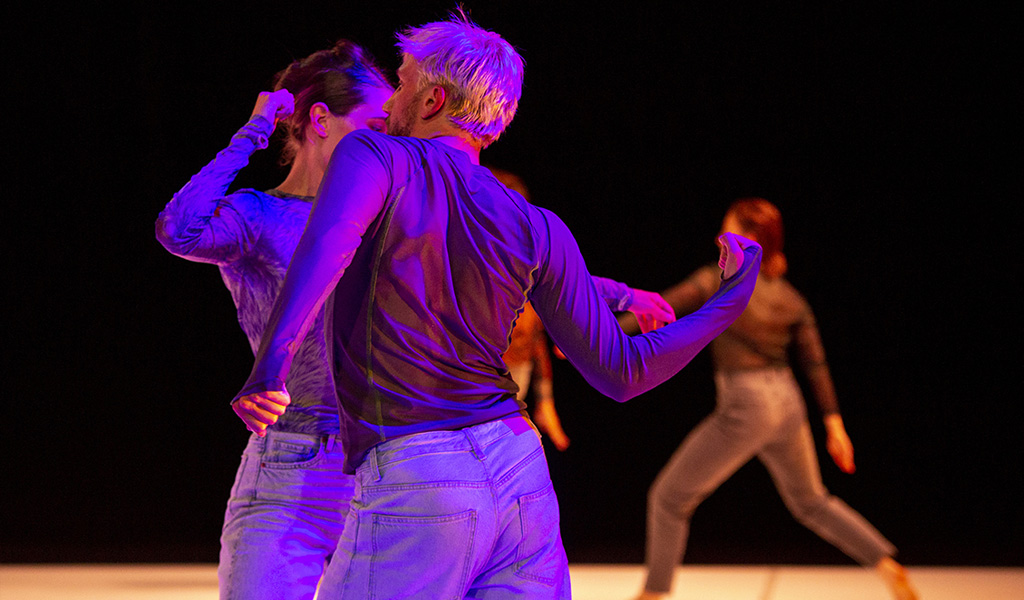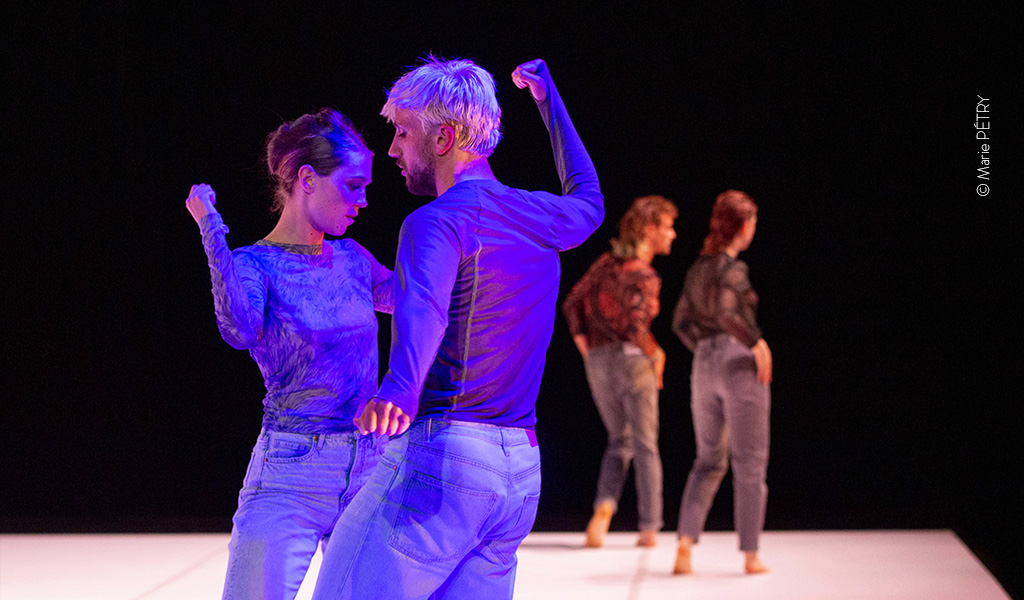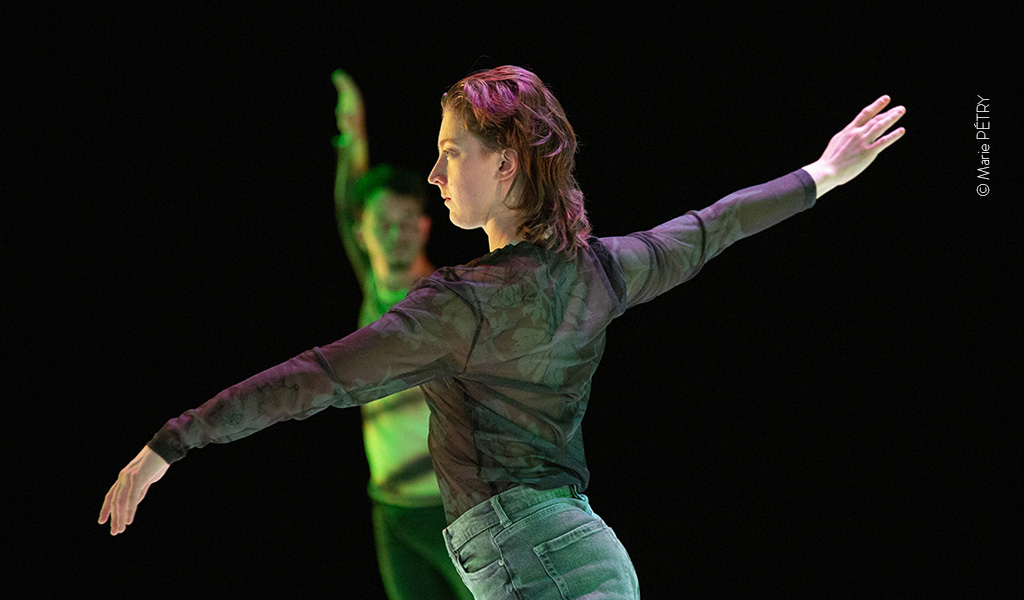Creation
2024
TIME, is primarily about the importance of sharing time with the audience. It’s an evening spent sharing an artistic object with a certain number of people. It’s about a moment in time that’s both within and outside of time.
TIME, is also about the time it takes to create a piece, the time it takes to understand it, and the time it takes to experience it.
Finally, my wish is for TIME, to be a piece that – through its choreographic structure, dance and bodies – allows us to feel time, both in its implacability, but also in the joyous vitality that passes through us to make do with this time that is given to us, against all odds.
Michèle Murray
ARTISTIC DIRECTOR, CHOREOGRAPHY: Michèle MURRAY
ARTISTIC COLLABORATION: Maya BROSCH
PERFORMERS: Alexandre BACHELARD, Léo GRAS, Baptiste MENARD, Manuel MOLINO, Elisa ROUCHON, Léa VINETTE, Julien-Henri VU VAN DUNG
MUSIC: Benjamin GIBERT
LIGHTS: Catherine NODEN
COSTUMES: Michèle MURRAY and Maya BROSCH
PARTENAIRES
PRODUCTION: PLAY / Michèle Murray – Association Stella
COPRODUCTIONS AND SUPPORT: National Choreographic Center CCN Tours as Associate Artist 2024 – 26 / Théâtre La Cigalière Sérignan – Associate Artist 2022 – 25 / Pôle de Développement Chorégraphique Bernard Glandier-Director Didier Théron – Associate Artist 2022 – 24
WORK RESIDENCIES: MONTPELLIER DANSE, AGORA, CITÉ INTERNATIONALE DE LA DANSE, WITH THE SUPPORT OF FONDATION BNP PARIBAS
PUBLIC PARTNERS: DRAC OCCITANIE PYRÉNÉES MÉDITERRANÉE / RÉGION OCCITANIE PYRÉNÉES MÉDITERRANÉE / VILLE DE MONTPELLIER / CONSEIL GÉNÉRAL DE L’HERAULT
© Marie Pétry
PRESS TIME
Dansercanalhistorique / Philippe Verrièle / Seen on June 14, 2024 at the Festival Tours d’Horizons – CCN Tours
https://dansercanalhistorique.fr/?q=content/time-de-michele-murray-tours-d-horizonsWith TIME, Michèle Murray affirms her filiation with American abstract dance in a masterful piece.
… Very well structured according to a logic of the performers’ accumulations and de-accumulations, TIME can be considered an abstract piece. An empty stage, inhabited by large expanses of frank color with slightly hazy borders, enhanced by Catherine Noden’s lighting, signals a certain inspiration à la Mark Rothko (1903–1970), albeit less systematic. As soon as two dancers enter from backstage, the absence of narrative intent becomes clear. They move forward. They move to the back of the stage. A diagonal in strict unison and moving frontstage. Succession of highly elaborate choreographic patterns, marked by the internal fluidity of movement until a standstill; then a new pattern begins, strongly differentiated from the previous one. The gesture blends into this construction, leaving plenty of room for pattern development without allowing the flow of movement to establish itself (unlike Anne Teresa De Keersmaeker, for example)…

